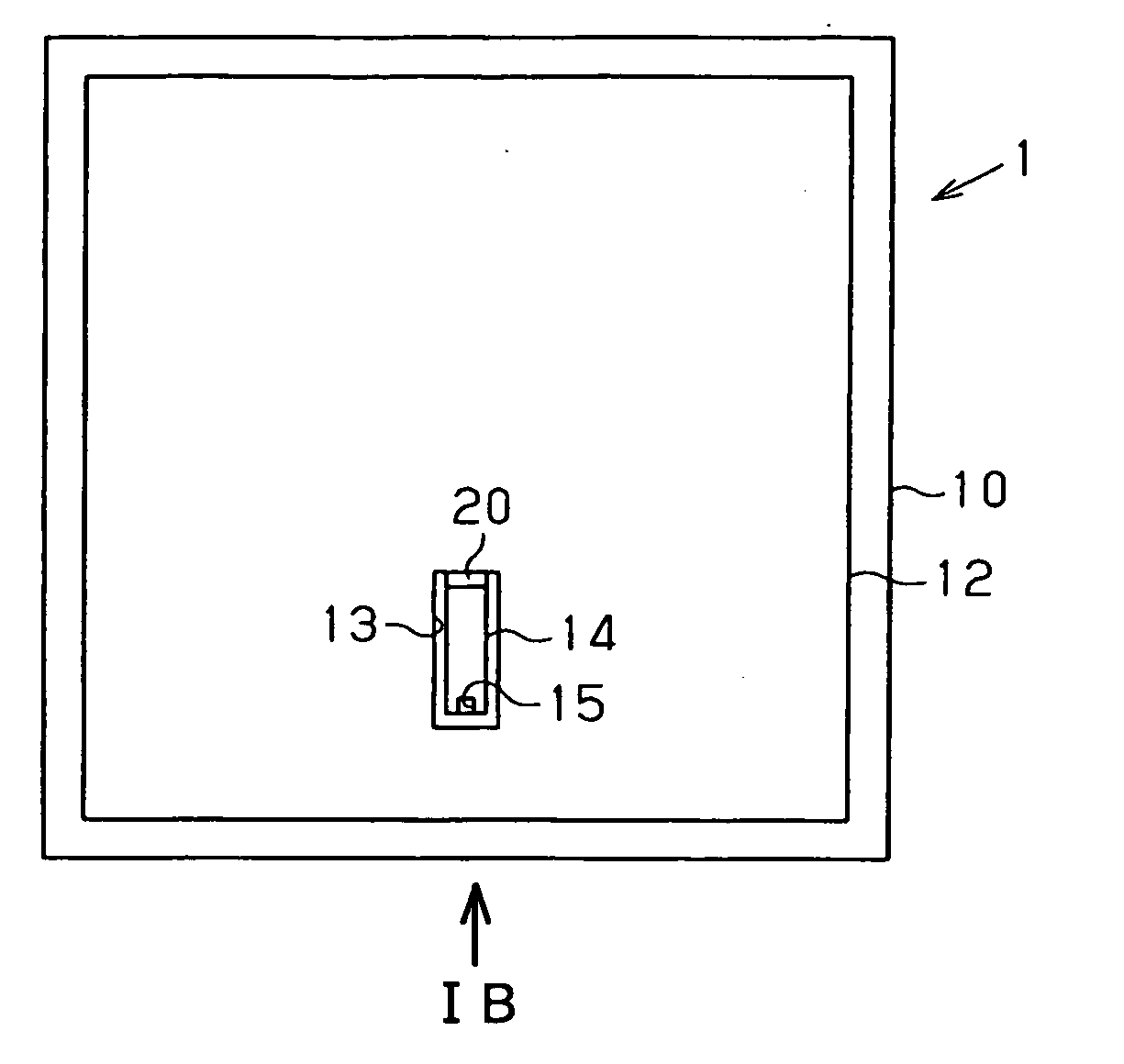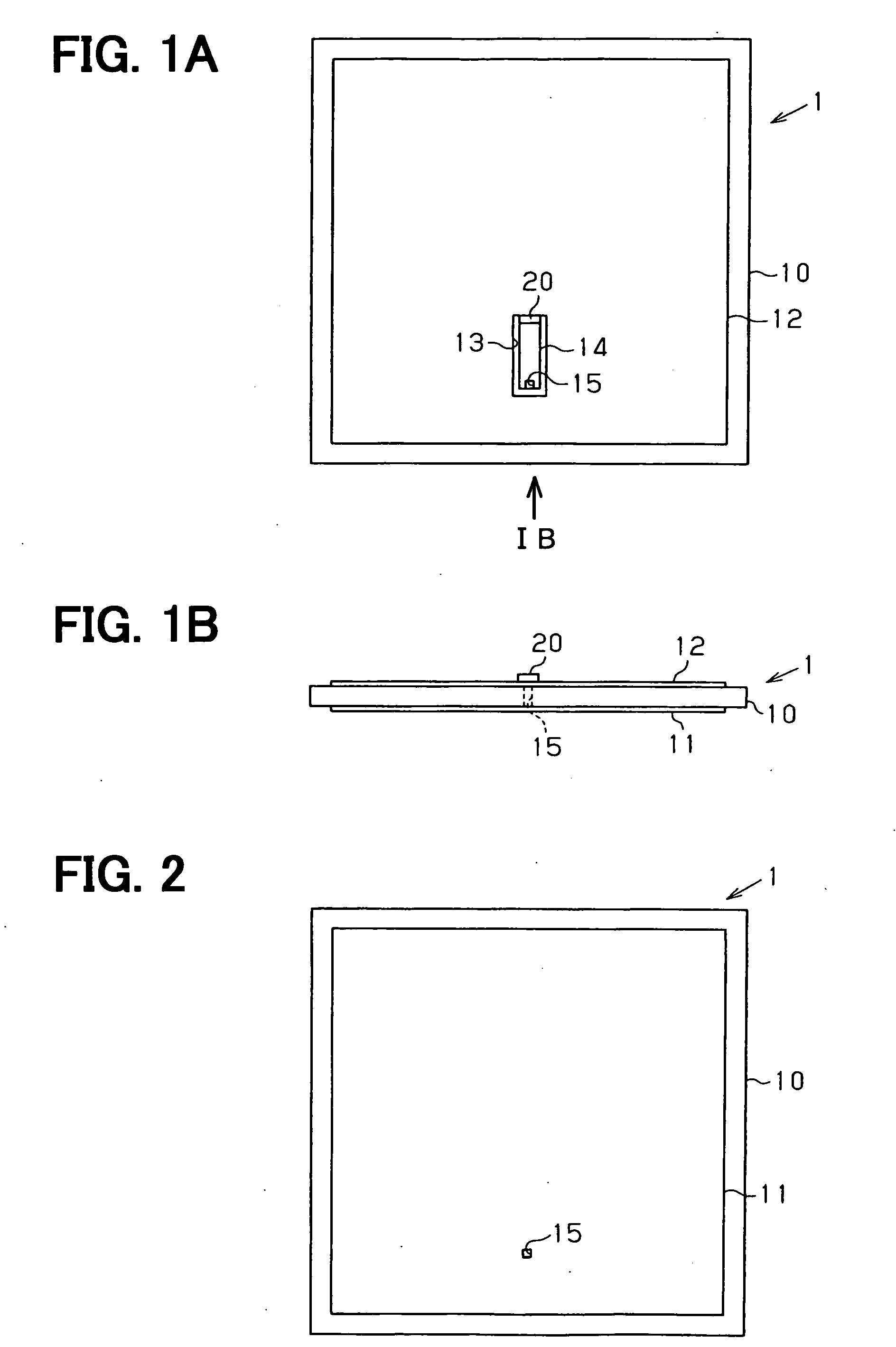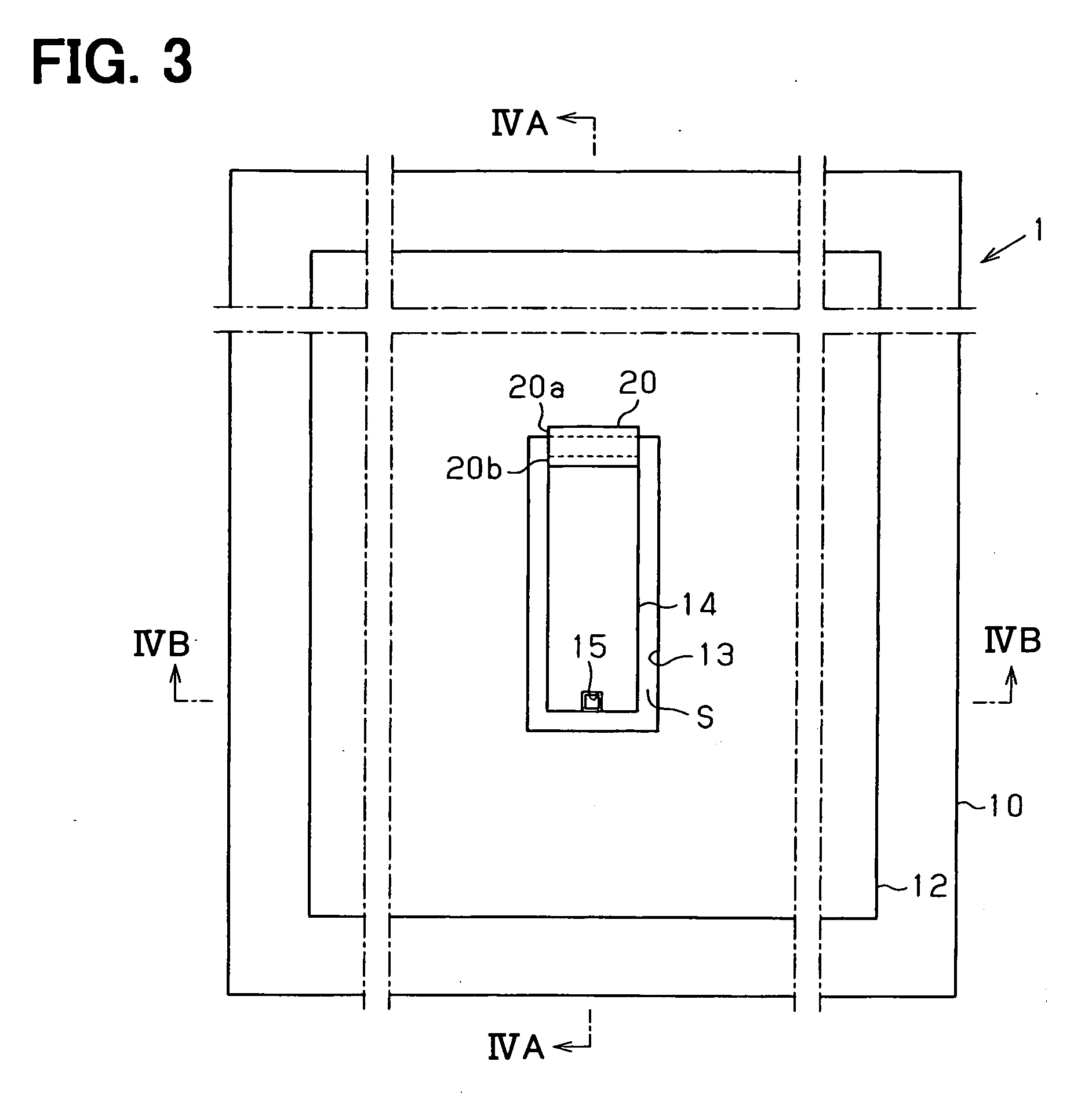IC tag and IC tag attachment structure
a technology of ic tags and attachment structures, applied in the field of ic tags, can solve the problems of metal objects, inability to use antennas with spacers, and tend to degrade the characteristics of antennas, and achieve the effect of wide directivity in free spa
- Summary
- Abstract
- Description
- Claims
- Application Information
AI Technical Summary
Benefits of technology
Problems solved by technology
Method used
Image
Examples
first embodiment
[0051] Hereafter, a first embodiment of the present invention is described with reference to FIGS. 1A-4B. As shown in FIGS. 1A, 1B and 2, an IC tag 1 of the first embodiment includes a dielectric body 10 of a plate shape, which is square and planar. A first metal plate 11 for transmission is fixed to a bottom surface of the dielectric body 10 having a square planar shape.
[0052] A second metal plate 12 for transmission is fixed to an upper surface of the dielectric body 10 with its outer edge (or peripheral edge) nearly (or substantially) facing symmetrically with (or overlapping with) an outer edge of the first metal plate 11 via the dielectric body 10. Therefore, an area surrounded by the outer edge of the second metal plate 12 has nearly (or substantially) the same size as an area surrounded by the outer edge of the first metal plate 11 has. The second metal plate 12 has a hole 13 of an oblong (or rectangular) shape. The metal plates 11 and 12 together constitute an antenna.
[005...
second embodiment
[0080] The IC tag 1 of a second embodiment differs from the first embodiment in that, as shown in FIGS. 13A and 13B, the first metal plate 11 and second metal plate 12 are fixed to the dielectric body 10, within a given misalignment ΔY. This given misalignment ΔY is λ / 30 measured in a direction along the surfaces of the dielectric body 10 between the outer edge of the first metal plate 11 and the outer edge of the second metal plate 12. Here, the value λ is wavelength of an electric wave in the dielectric body 10.
[0081] Specifically, in FIGS. 13A, 13B, the outer edge of the second metal plate 12 is slightly smaller than that of the first metal plate 11 with the misalignment ΔY within λ / 30. Alternatively, the outer edge of the second metal plate 12 may be slightly larger than that of the first metal plate 11 also with the misalignment ΔY within λ / 30.
[0082] In FIGS. 13C, 13D, the outer edge of the second metal plate 12 is as large as the outer edge of the first metal plate 11 with t...
PUM
| Property | Measurement | Unit |
|---|---|---|
| microwave frequency | aaaaa | aaaaa |
| microwave frequency | aaaaa | aaaaa |
| impedance | aaaaa | aaaaa |
Abstract
Description
Claims
Application Information
 Login to View More
Login to View More - R&D
- Intellectual Property
- Life Sciences
- Materials
- Tech Scout
- Unparalleled Data Quality
- Higher Quality Content
- 60% Fewer Hallucinations
Browse by: Latest US Patents, China's latest patents, Technical Efficacy Thesaurus, Application Domain, Technology Topic, Popular Technical Reports.
© 2025 PatSnap. All rights reserved.Legal|Privacy policy|Modern Slavery Act Transparency Statement|Sitemap|About US| Contact US: help@patsnap.com



